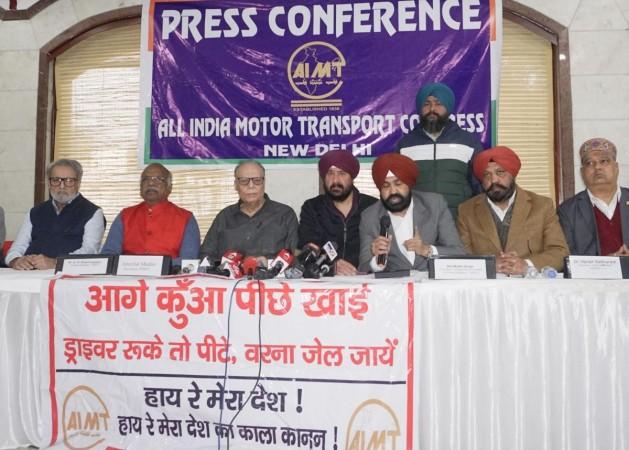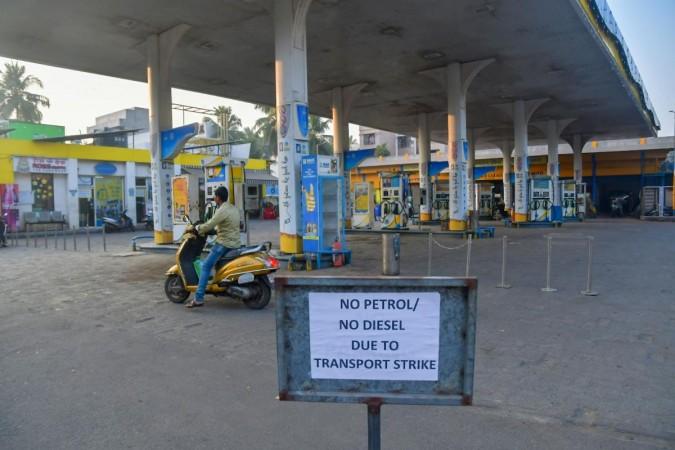
Countrywide protests by transporters against the increase in quantum of punishment in hit-and-run cases under the new criminal code ended on Tuesday night after the Centre's assurance that it will have a discussion with them before implementing the provisions.
Representatives of All India Motor Transport Congress (AIMTC) met Union Home Secretary Ajay Bhalla on Tuesday. During the meeting Bhalla told them that provisions under the new law has not been notified yet. He also assured them that the ministry will have a discussion with AIMTC before implementing it.
After the assurance that the provisions will be discussed before implementation, AIMTC appealed to the drivers to end the strike.
According to AIMTC Chairman Malkit Singh Bal, Section 106 (2) of the new law has a provision of up to 10 years' imprisonment and fine in 'hit-and-run' cases. Transporters and truck drivers have been opposing this provision and demanded that it should not be implemented.
President Droupadi Murmu has given her assent to the Indian Justice Code, Indian Civil Defence Code and Indian Evidence Act and it can be notified before January 26. The Home Ministry says that with this change, a system will be established through which any victim can get justice within 3 years.
What the new law says
The new hit-and-run law imposes stricter penalties on drivers who flee accident spots. According to the law, a driver who flees the scene after an accident will face up to 10 years in jail or a fine of Rs 7 lakh. This law also applies to private vehicle owners. Earlier, under IPC Section 304A, the maximum prison term was for two years.
Why truck, bus and oil tanker drivers protesting against the law?
They argue that these harsh measures will jeopardise their livelihoods, discouraging the drivers and potentially exposing them to mob violence when transporting the injured. Their demand for the repeal of these provisions has led to a nationwide strike.
Advocate's view
Speaking with IANS, advocate Shashank Dewan said: "Punishment is specifically designated for cases of rash and negligent driving, excluding those not engaging in such behaviour. It is crucial to bear in mind this specific clause. The prosecution must ultimately prove factors like intoxication, over-speeding, or engaging in rash and negligent driving."
He said the threat of hit-and-run is significantly greater, prompting a sense of responsibility among the drivers. "Accidents can happen without necessarily involving rash or negligent driving," Dewan added.
On protesters saying the owner of the vehicle should be made responsible, Dewan said that the responsibility lies with the driver.
"Consider a scenario where a driver, perhaps under the influence of alcohol, drives at 140 kmph and causes an accident. It's not possible for the vehicle owner to personally monitor every driver. In instances where rash driving is not observed, such as a pedestrian crossing the highway without precautions, the prosecution might not be warranted. However, acknowledging this perspective may seem idealistic," he said.
"Navigating prosecutorial challenges is a current issue with ambiguous definitions of what constitutes rash and negligent driving. There's a lack of consensus, with some arguing that over-speeding alone is not rash driving. The criteria for rash and negligent driving remain arbitrary and unclear," he added.
Issues arise, Dewan said, when, in an attempt to prove allegations like overspeeding, the authorities often rely on subjective claims. "Some judgements suggest the need for skid marks as evidence, but this alone may not define rash and negligent driving," he said.
Dewan also said that despite these challenges, there is a need for change, particularly in addressing issues like drunk driving. "It is important to acknowledge the greater menace and risks associated with certain driving behaviours," Dewan said.
Meanwhile, Rajendra Kapoor, the President of All India Motor & Goods Transport Association, has told the drivers and vehicle owners in Delhi that even though he agrees that the decision regarding the period of custody and the amount of fine in hit-and-run cases has some flaws, the solution to the issue can be found only through talks.

"It is possible to find a solution and for that all the officials of our organisation are working diligently. A solution will definitely be found and soon the government will be ready to amend the law," he said.
Kapoor has also requested his colleagues associated with transport business to be patient, as the law will be implemented only from April 1. "Therefore, maintain peace. We have to work peacefully with full faith in God," he said.
Impact of the protest
The impact of the agitations is palpable, with approximately 2,000 petrol pumps in western and northern India running out of fuel stocks.
Cities like Chandigarh are implementing measures to manage the limited fuel supply, including temporary restrictions on petrol and diesel sales for two-wheelers and four-wheelers.
The situation raises concerns over potential disruptions to essential supplies like vegetables, fruits and milk if the strike persists or escalates into a large-scale pan-India movement.
(With inputs from IANS)

















